By Manuel “Bobby” Orig, Director, ApoAgua
A summary of the book The Creative Mindset: Mastering The Six Skills That Empower Innovation By Jeff Degraff And Staney Degraff
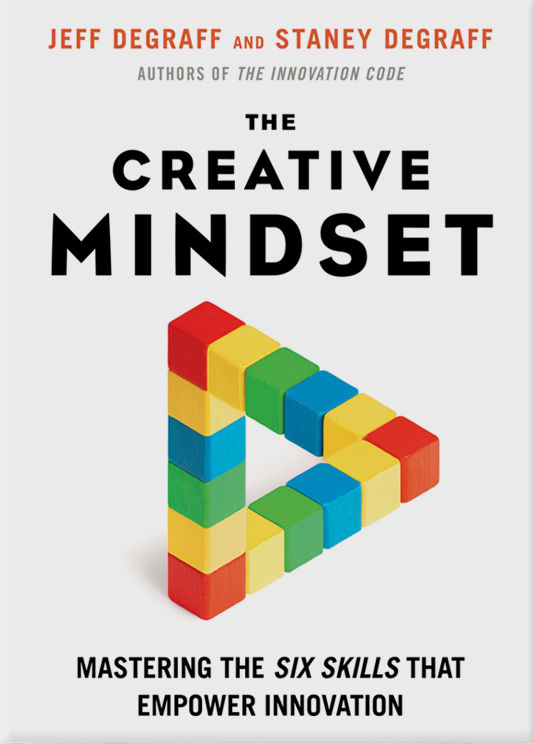
This book is a valuable resource for all A-People as it provides a wealth of information about the essential things you need to know and enriches your understanding of how to drive innovation, a core value of Aboitiz. It is what you need to be able to make a meaningful contribution to innovation and reinforce it as one of the great defining qualities and competitive strengths of the Aboitiz organization.
Praise for the book
“Jeff and Staney DeGraff emphasize that small acts of creativity can have huge consequences and that ordinary people can do extraordinary things if they can see the opportunities in front of them.”
– Mitch Jacobson, Exec. Director, Austin Technology Incubator at The University of Texas at Austin/Exec. Director, Blackstone LaunchPad at UT Austin
Nearly all of today’s major innovation workshops and programs call on organizations to drive innovation. What they miss is that innovation comes from the personal creativity of individuals. And creativity does not require an advanced education or technical skills – all employees can be creative. Often, all they lack is a fitting mindset and the right skills.
The Creative Mindset brings how-to advice, tools, and techniques from two master innovators who have taught and worked with over half of all Fortune 500 companies. Jeff and Staney DeGraff introduce six essential creative-thinking skills that can be easily mastered and remembered as the acronym CREATE: Concentrate, Replicate, Elaborate, Associate, Translate, and Evaluate. These six skills sequenced as steps, simplify and summarize the most important research on creative thinking and draw on over thirty years of real-world application in some of the most innovative organizations in the world.
It’s time to rethink the way we make innovation happen. Individual creativity is an immense untapped resource, and you don’t have to be Beethoven to make a big difference.
About the authors
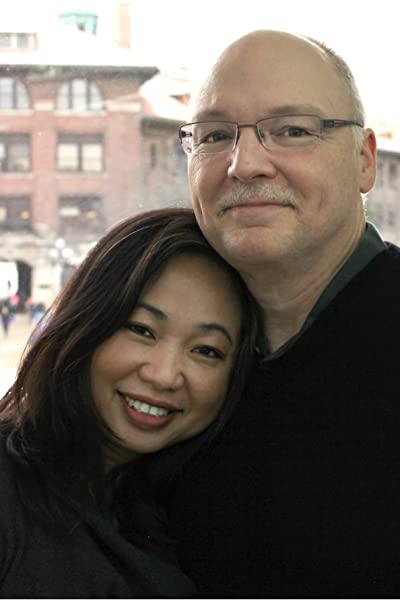
Jeff DeGraff is an advisor to Fortune 500 companies and a professor at the Ross School of Business at the University of Michigan. His simultaneously creative and pragmatic approach to making innovation happen has led clients and colleagues to dub him the “Dean of Innovation.” He has written several books including, Leading Innovation, Innovation and You, and The Innovation Code.
Staney DeGraff is CEO of Innovatrium, works with large organizations, universities, and nonprofits to create sustainable innovation ecosystem. Her research is focused on generating Constructive Conflict in teams and organizations to produce innovation and on quantifying the commercial and social value of innovation. She co-wrote The Innovation Code with her husband, Jeff.
INTRODUCTION
Demistifying Creativity
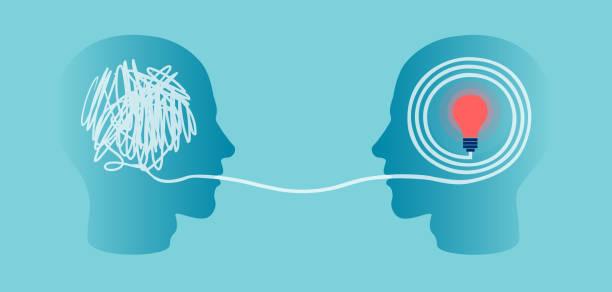
MIRACULOUS, SINGULAR, PORTENTOUS: these are the earth-shattering, grandiose words we normally use to describe acts of creativity. In our collective imagination, creativity is an epic breakthrough achieved by lone geniuses with extraordinary intellectual powers. Surrounding creativity is a magical, rarefied – indeed unapproachable – aura: it’s a realm widely considered accessible only to the privileged few who have been endowed with the innate gift of invention.
Yet the most game-changing innovations in all domains of our world are minor, incremental, simple. They don’t burst forth in the middle of the night in the isolated labs or studies of masterminds and virtuosos – they arise in crowded rooms of diverse thinkers. These people don’t completely reimagine the game or start totally anew. Instead, they make slight adjustments or modifications to existing things, which in turn have surprisingly far-reaching implications. They think big by working small.
Starbucks is a case study in the power of simplicity when it comes to innovation. Its architects understood that in order to make a splash, they needed to do something new, but they did not have to reinvent the wheel. While McDonald’s, the largest coffee establishment at the time, was focusing on keeping everything the same, Starbucks was incrementally adding to its offerings: moving from commodity product (coffee) to upscale product (cappuccino) to theater experience (modern coffee house).
That is exactly what The Creative Mindset was all about: being creative in small ways that have big consequences. These small creative sparks can come together to produce innovations that change the way we live.
Corporations spend billions of dollars each year trying to get their employees to innovate. What they miss is that the personal creativity of individuals is the driver of innovation. Here lies the blind spot of innovation that so many leaders miss: the space where the corporation and the individual meet. A company is at its most creative when its people find personal inspiration in their own lives.
Creativity And Innovation
It is important to make a distinction between creativity and innovation.
Creativity is the conception of a useful novelty, and innovation is applying that creativity into a desired result. In other words, innovation is the tangible “product,” or the result or outcome of a creative endeavor.
Creativity is the power that generates innovation. To learn to innovate, we need to learn to be creative. To become creative, we need to first develop our creative mindset and learn various tools and techniques to enhance our creative skills.
According to the 2010 IBM Global CEO Study, creativity is considered the most important attribute in managing the increasingly complex business environment. The study described the characteristics of creative leaders who can translate their creativity into future success. These individuals are:
- Hungry for change
- Innovative beyond customer imagination
- Globally integrated
- Disruptive by nature
- Genuine, not just generous
Those who adopt and master a creative mindset are ordinary people who make things extraordinary just through their ability to see options, create solutions, and gather the resources other people overlook.
Mastering Creativity
Successful innovators are not any more intelligent than the ordinary person. Rather, they are more motivated. This innovation can come from necessity or the internal drive to succeed. Either way, we must have both skill and will to make innovation happen.
The Creative Mindset begins with the understanding that behind creativity are concrete skills that anyone can learn. This book presents the techniques of the process as six skills of creativity:
- Clarify: getting the challenge right
- Replicate: mimicking and reapplying ideas
- Elaborate: multiplying ideas by adding new ones
- Associate: connecting ideas with analogies
- Translate: creating stories from idea
- Evaluate: selecting the best ideas
Moving through each of these six skills, you will develop increasingly advanced capability – much as you develop muscles by exercising.
The Creative Mindset is a theory of practice. It does not attempt to provide an in-depth clinical explanation of the mechanisms of creativity, both personal and situational, or an exhaustive compendium of creativity methods and techniques. Rather, the six skills, reflecting the innovation process, are based on their relative complexity.
This book is a simple framework to give you a basic understanding of how to develop your creative abilities in a practical way, and apply them to transform the ordinary into the extraordinary.
What Is The Creative Mindset?
When we combine two seemingly basic elements that haven’t been tried before, we can build something extraordinary. When we eliminate something or add something on an already great product or service, we can make it even better. This is what a creative mindset is: making minor slight, incremental changes to preexisting things, which can take us surprisingly far.
As with all learning, a creative mindset requires practice and persistence. Think of it as though you are learning to speak a foreign language or play a new instrument. It doesn’t matter if you are eight or eighty, you still have to work at it to develop a level of mastery. The aim here is to make the journey enjoyable and worthwhile.
There is a powerful, quietly revolutionary impulse that underlies all acts of the Creative Mindset: a rejection of the boundaries that traditionally delineate creative acts. The Creativity Mindset opens up the possibility of innovation in all realms of our everyday lives.
Becoming Creative
Anyone can master a creative mindset. That’s because the hallmark of the Creative Mindset is its teachability – it’s a state of mind that can be learned and developed.
The late psychologist Max Wertheimer is largely credited as the founder of the modern study of creativity. In his book Productive Thinking, he lays out the process by which we make ourselves ready to create.
Wertheirmer explains that preparation must precede incubation. That is, you must be emotionally and intellectually ready before you can truly generate novel ideas and recognize them as such. Using a creativity technique is of little value if you are not first positively predisposed to seeing what is often missed or overlooked as a potential solution, and working through the ambiguity to better understand it.
It is useful to think of creativity skills as a collection of lenses of a camera. Change the lens and you can change your perspective on a subject – wide angle to telephoto. Now think of the Creative Mindset as the photographers looking for an interesting shot. The photographers perceive, discover, and make sense of what they survey while looking through the lenses.
So how do you get into the right frame of mind? Here are some strategies that you should practice before and during your journey through the six skills:
- Notice when, where, and how you are creative. Let’s find the optimal conditions under which creativity seems to come to you more easily. Is it in the morning before the family has woken up, or late at night when everyone is asleep – or is it right after lunch? Do you get ideas when you are engaging in a discussion or when you think about the issues at hand during quiet time in your office?
- Be prepared at all times to capture ideas when they begin to flow. Keep a pad and pencil in your purse or pocket, or take your smartphone with you to record your thoughts.
- Pay attention to who and what gives and takes your energy. Is it the playlist on your phone that puts you into a creative mood or the inspiring coworker who always gets your spark going? Do you get ideas when you interact with people or when you walk around?
- Look for signs of incongruities, or anomalies. The leading authority on sensemaking, Karl Weick, stated that one way to enhance our sensemaking is to look for disconfirming, not confirming, feedback. Always ask yourself, “What if what I see is not quite accurate?” or “Am I interpreting what I see correctly?” or “What if I’ve gotten the situation wrong?’
- Challenge boundaries, authority. In the words of Paul Torrance, one of the first researchers of creativity, become a “Beyonder.” A beyonder is a highly creative individual who always pushes beyond boundaries with a clear sense of purpose and an abundance of courage to be different. Do not take anything at face value; dig deeper for the purposes behind existing systems and procedures.
- Escape assumptions about how things should be. Wage war against “This is how we’ve always done it!” Be comfortable in being unique, flexible, and different. Question everything, especially conventions.
- Have a sense of destiny. To be creative, you need to have courage to believe in yourself.
When it comes to the creative mindset, understand that the world is your classroom, that anything and everything might become a game-changing lesson. The Creative Mindset is something you can develop, and it requires constant practice to achieve mastery of the craft.
CLARIFY
Getting The Challenge Right

Business leaders understand that there can be no effective creative solution if it does not solve the problem. Coming up with a solution without understanding the challenge is akin to having an answer without knowing the question. The ability to investigate, identify, and articulate a problem is the paramount creative skill. This is what the first step of the Creative Mindset, CLARIFY, is all about. We cannot problem-solve if we don’t know what the problem is.
Wayfinding Strategies
Those who embody a creative mindset are expert observers of their surroundings spotting resources and putting them back to work in ways other people don’t. They quickly make sense of their situation and shift through their option to find the best course of action.
Here are three wayfinding strategies that can help you navigate your situation and challenge:
- FOLLOW THE RIVER UPSTREAM
Creativizers can learn a lot from wilderness guides. Whenever they’ve lost their way, adventurers know to follow the river upstream to the headwaters. This is a wonderful analogy for growth and change: take an innovative device, service, or solution, and trace it all the way to its roots – to the basic foundational parts that make up its whole. Identify the fundamental problem the product was created to solve. Then determine which elements actually make the product both innovative and effective in solving the problem.Is it lighter? Smaller? Easier to use?
- TALK TO THE LOCALS
In the world of innovation, suppliers, distributors, and service providers are the locals who can give you insider expertise that you won’t get anywhere else. Bring these locals into your project as early as possible, preferably before the design and development stages. Ask them how them how they would improve your product or service. Encourage them to integrate their capabilities into your innovation goals. Be kind and generous to these suppliers, distributors and service providers. If they have reason to believe that you’ll take advantage of them, they’ll inevitably be reluctant to share their local knowledge. Give them the freedom to work their magic. - FORAGE AND FISH
Once you find these hidden innovators, go on an expedition together to co-create your future project. Search for the low-hanging fruit that others before you missed because they didn’t have the help of locals. Without the knowledge and experience of the locals, you won’t know what you can actually use and how to use it. Make it worthwhile for the suppliers, distributors, and service providers to help you by bringing additional value to their innovation. The more lines you put out, the more you’ll likely pull in a big catch.
Spotting Opportunities
Once you’ve spent time researching, examining, and collecting information, it’s time to figure out what needs innovating. What does it all mean? What is the essence of the creative opportunity?
Regrettably, swaggering catch phrases like “go big or go home” are commonly associated with creative thinking. Accordingly, most of these braggarts end up doing the latter. The next big thing most likely will be small. Instead of trying to develop the next breakthrough technology, you might find an unfilled niche that a current technology could fill if it were used differently. Maybe a solution could be creative simply by applying it in a new way.
For example, super glue was developed for industrial and household uses, but is now commonly used to close wounds.
Alternatively, an old problem may be solved with a new approach. Consider how the repair of new embankments was greatly expedited by adding cement to industrial canvass. Drape the cement-infused fabric like a carpet and just add water. Voilà, instant infrastructure.
The solution doesn’t have to be revolutionary for the effect to be. Better, cheaper, and faster might also work.
When you’re searching for opportunity for creative thinking, here are three things to look for:
- Find Unmet Needs and Fill Them
Examine where clients and consumers are dissatisfied with a solution.
The key here is to uncover a shortcoming or void and to fill it. - Find Inefficiencies and Fix Them
Observing when and where services are untimely is a great way to locate a high-potential opportunity. - Find Complexity and Get Rid of it
Identify systems that are unnecessarily complicated or that rely too heavily on bureaucratic procedures, and make them simpler.
Clarifying Your Challenge
To clarify your challenge, it is not enough to spell out what you want to do. You also need to examine your own motivation and desire. You want to enter any innovation challenge with your eyes wide open. Before you embark on any new project, especially one that will consume your time, effort, and other resources, you need to be sure that you are solving the right problem and that you really want to do it. Otherwise you will start so many projects and not finish them.
Here are the steps to clarifying your challenge:
1. CLARIFY your project. Ask yourself the following questions:
- What is the challenge or opportunity?
- Is it real?
- Why am I working on it?
- Is it worth doing?
- What can I hope to attain, accomplish, gain, or resolve?
- Can I really succeed?
2. CLARIFY your involvement in the project. Ask these questions:
- Will completing this project make a difference in my life?
- Will I enjoy working on this project?
- Will it matter five years from now?
- Does this project have a high return for my effort?
- Does this project have a real deadline?
- Does this project fulfill my values?
3. Take a look at the information you have and still need in order to execute this project:
- What do I know now?
- What do I still need to know?
- How will I come to know it?
- How do I define the challenge as of now?
4. CRAFT a clear challenge statement:
- WHO
- WILL DO WHAT
- WHERE
- WHY
REPLICATE
Mimicking and Reapplying Ideas
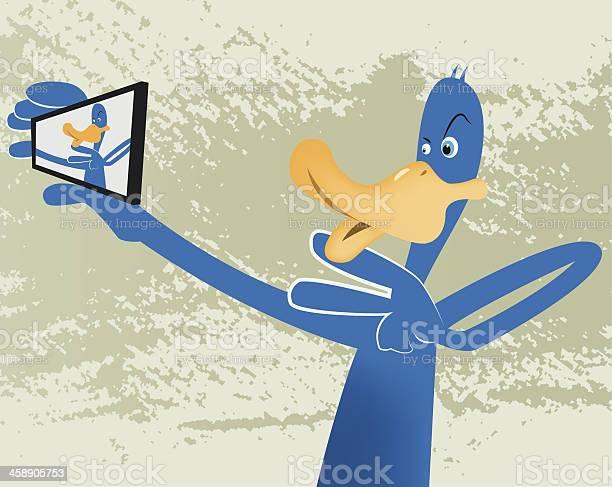
Replication is the most rudimentary form of creativity. It embodies the accessible and simplicity of the Creative Mindset: it does not ask us to do extraordinary things; it merely asks us to move one ordinary thing over to another unexpected but nevertheless ordinary thing.
For example, physicians at the Mayo Clinic who wanted to improve the patient experience paid a visit to a Ritz-Carlton Hotel known for it customer service. Like anthropologists observing the customs and behaviors of a unique culture, the doctors were able to borrow creative practices from one domain and apply them to another. Now, the Mayo Clinic check-in experience is more like that of a high-end hotel than one at a hospital. This level of replicated service attracts patients from all over the country. Although not new to the world, these creative practices are novel and useful to the doctors.
The key to replication is to investigate ideas in unfamiliar places and to implement them in familiar ones. Steve Jobs saw this possibility to move across boundaries to adapt ideas as the key to useful creativity.
“Creativity is not just connecting things. When you ask creative people how they did something, they feel a little guilty because they didn’t really do it, they just saw something. It seemed obvious to them for a while. That’s because they were able to connect experiences they’ve had and synthesize new things. And the reason they were able to do that was that they’ve had more experiences or they have thought more about their experiences than other people.”
– Steve Jobs
Replicating Techniques
There are three fundamental ways to REPLICATE: going on field trips, making new friends, and copying nature.
- GO ON FIELD TRIPS
Sometimes the best way to learn something new is to see someone else do it. The initiation into any area of practice typically starts with a guided observation of the craft at work to gain some fundamental awareness of how things are done. The idea is that knowledge is gained incrementally as one moves from novice to artisan with the guidance of an acknowledged master.Many people have found creative breakthroughs via these little excursions or field trips. For example, Milton Hershey manufactured chocolate bars using a modified soap manufacturing machine he had seen at the World’s Columbian Exposition in Chicago.
Great ideas typically come from everyday experiences. Be sure to note only things that come to mind and don’t push too far. When you examine your new surroundings, ask yourself what these people are doing to be creative and how you can apply that to what you’re doing. Remember that you are not creative on demand; you are creative when your creativity demands it.
- MAKE NEW FRIENDS
When you talk only to people who share your worldview, our preexisting ideas are merely reinforced.What if you intentionally sought out and talked to people with whom you don’t see eye-to-eye? You might just start to see things from a different perspective. The term for this is counterattitudinal advocacy. Creative people look for disconfirming feedback and widen their frame of reference, point of view, and circle of friends.
Engaging with new people with different worldviews can produce a mild form of dissonance because our beliefs don’t line up. This awareness can play out in several different ways, including capitulation, compromise, denial, or other forms of psychological distress. But when engaged constructively, this tension can generate great creative power and produce hybrid solutions that build on each other.
Creativity is much more about the quality of our connections as it is about the uniqueness of our ideas. Pick any creative breakthrough – a miracle drug, a game-changing technology, or an artistic movement – and you will find an ensemble of cast of colleagues and friends with very different skills and thoughts about how things should work.
- COPY NATURE
Leonardo da Vinci’s prototype of an early form of helicopter was based on seedlings falling from trees. Take a closer look at rudders on ships and submarines and you’ll see similarities to whale flukes. In the wings of our fastest jets, you’ll see an uncanny resemblance to falcon wings.Observing something in the natural world and then modifying it into a human-made creation is called biomimicry. Think of it as an accelerated form of evolution – and the ultimate form of replication.
Early humankind used nature to survive. Animal skins became garments, sharp stones became knives, and eventually, the seeds of grasses and vegetables were collected, planted, and harvested. We co-opted the elements of our environment for our use, and over time, we extracted the laws of nature.
The next time you have a challenge or initiative, go into nature and pay careful attention to what strikes you as the most fascinating and elegant. Pay attention to the design, the process, and the dynamics of what you see – and how things grow, eat, and run. You will very likely come across some unforeseen, perhaps even astonishing solutions.
ELABORATE
Multiplying Ideas By Adding New Ones
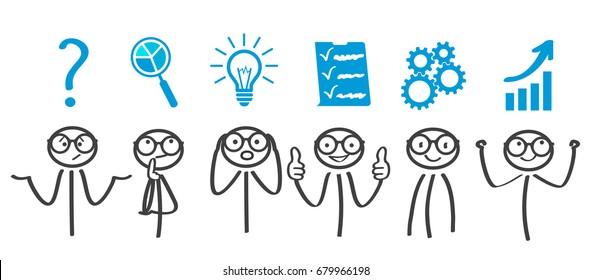
Elaboration illuminates the arbitrary way in which we have organized our language and our thinking. By connecting ideas that are not typically associated, we can create new ones as if by magic.
Even the most obvious associations make us aware of our mental processes. Think of spoon and fork and the idea of the spork is the effortless result.
It is a rudimentary function of the mind to assimilate and accommodate new experiences. Elaboration is not to push connections but rather to simply allow them to happen.
Elaboration is all about making faster and better connections. This approach requires working through a lot of trash ideas to get to the new treasures.
Elaborating Techniques
There are three fundamental ways to ELABORATE: experimenting with random words, using SCAMPER questions, and trying on the six thinking hats.
- RANDOM WORDS
William James, the founder of American psychology, described the personal awareness of one’s mental processes as a “stream of consciousness.” James believed that in encountering the external world of people and places, we also become aware of our moment-to-moment subjective conscious experience. This form of inner dialogue, where we connect our thoughts in a free-flowing torrent of ideas, can be used to make mindful connections that help us solve problems creatively.Jeff, the author’s story: Cynthia believed that words were like sparks that lit the fiery furnace of imagination. She found that thinking harder and deeper about a problem seldom yielded any good solutions. Instead, Cynthia would keep the problem in her mind and point to random words in the dictionary to see what creative connections her mind would make. She ignored the weak connections, but paid careful attention to the words that triggered powerful ideas.
Cynthia noticed that the more a word was already closely associated with her problem, the less interesting the connection. Conversely, the more unfamiliar the association, the more unique and valuable the solution.
For example, she kept missing important family events because her husband and their children would enter them in different scheduling apps on their phones. The conventional response would have been to add yet another schedule to tie all the other schedules together. However, Cynthia knew that would be using the same logic that created the problem to begin with. Instead, Cynthia opened a dictionary and randomly pointed to the word cry.
This gave her an idea. She bought a large brass bell, and every evening after dinner, she rang it like a “town crier.” She would collect the scheduled events and announce them the week before they occur. Sure, her solution was unusual, but it was memorable and effective. Cynthia understood that random words could lead to eureka moments.
- SCAMPER TECHNIQUE
The acronym scamper poses six questions: What can we … Substitute? Combine ? Adapt? Magnify? Put to other uses? Eliminate? Reverse? By asking these simple questions, you can connect ideas and actions in new ways to easily produce useful variations.At its most basic level, SCAMPER helps make ideas more dynamic, but when we explore the trigger words more fully, we can actually use them to see an idea in a completely new way.
For example, for years the pocket zippers on coats went from the top to the bottom, allowing items to fall out if the pockets were not completely closed. By reversing the direction – activating the R in SCAMPER – zipping from bottom to top, a designer solved the problem.
- THINKING HATS
Physician Edward de Bono developed a method for indirect creative reasoning that he calls lateral thinking. The basic idea is to think around a problem through six different approaches. The six thinking hats represent different types of thinking and roles played by group members: Objectives, Information, Emotions, Judgment, Optimism, and Creativity.Taking on these hats enable individuals and groups to have a wider range of creative approaches to a challenge and to identify their blind spots.
For example, we might come up with something quite different if we were creating a new snack food from the perspective of information about its nutritional value rather than form our emotional response to its taste. This technique is ideal if you want a new angle to an old problem.
ASSOCIATE
Connecting Ideas With Analogies

Idea Bridges
Association by analogies can transfer information we believe we understand in one domain, the source, to help resolve a challenge in an unfamiliar area, the target.
For example, the design of vacuum cleaners was largely unchanged for nearly a century before inventor James Dyson used a different analogy – cyclone – to devise a new way to separate particles through the spinning force of a centrifuge.
In essence, analogies are bridges that allow our cognitive processes to quickly transport clusters of information from the unknown to the known, and back again.
Analogies require deeper forms of reasoning to associate how and why two ideas are similar or dissimilar.
For example, when we say “a story goes viral,” the analogy is really a cluster of multiple ideas: the cause of the disease, how it spreads, its symptoms, how the infection compromises health, and so on.
Association goes beyond linking ideas. It reforms them into something far more elaborate, and possibly new.
Associating Techniques
Using analogies and metaphors is easy for some people, but can be difficult for others. Here are three associating techniques that take very different approaches: Adaptive Reasoning, Imaginary Friends, and Synectics. If you find one that is harder for you to use, that’s normal. You just need to practice more to get comfortable with it.
1. ADAPTIVE REASONING
Your perspective or relative relationship to a problem can change or evolve through the use of analogies. Ask yourself how your given problem, initiative, or project is like something else. Pick a comparison that you know a lot about so you can fill in a lot of blanks.
For example, how is creating a successful marketing campaign like making friends at a new school?
The key is to vary your outlook and make as many new connections as possible.
There are three different types of analogies that frame different types of connections:
- Direct analogies: How is life like a rug?
- Personal analogies: How is my life like a bouncing ball?
- Symbolic analogies: How is life like spring turning into summer?
- Fantasy analogies: How would life improve if everyone told the truth?
One of the most significant challenges of adaptive reasoning is finding an appropriate metaphor for the situation. Metaphors can be superficial and connect complex ideas in overly simplistic ways.
For example, politicians often compare balancing a government budget to balancing your checkbook. But as successful investors know, money is best used to make investment produce higher rates of return than what is saved by paying down debt. So even though on the surface the metaphor seems to work, it’s actually a bad idea.
Be thoughtful, careful, deliberate, and rigorous about the analogies you make.
2. IMAGINARY FRIENDS
We all have heroes of the imagination – poets and scientists, philosophers and leaders, living and deceased. We quote them on social media and read their books and biographies, and we may have heard them talk or even met them once. If we presented them with our challenge or opportunity, what would they say? The more we are familiar with their personality and their work, the better equipped we are to interpret their imaginary response.
The late Steve Allen had a program on PBS called Meeting of Minds. Guests would dress up as famous figures from history and engage in conversations about contemporary topics.
For example, Sun Yat-sen, the founding father of the Republic of China, and Niccolò Machiavelli, the Italian Renaissance philosopher, had a conversation about how a leader should govern his nation. The actors who played these parts were assuming the personas of these luminaries. In a technique referred to as method acting, they were getting inside the character — his motivation, thought processes, and beliefs – and channeling what he might have said and how he might have acted.
This is a role-storming method where the creativity comes from imagining what someone might say or do – “What would Steve Jobs do if he had this challenge?” Gaining an understanding of how people who are unlike you might think about your challenge will inevitably make you see it anew.
Although we can never really know what the other people are thinking, we can speculate about it. The more we are familiar with their approach to their creative work, the more attuned we will be to their suggestions about our own.
How to Gather Your Imaginary Friends
- Think of people whom you admire or who have a very distinctive thought pattern unlike yours. You can think of this as gathering a board of advisors for yourself. Whom would you like to get advice from?
- Make sure your board of advisors consists of a diverse group of people so that you can get different perspectives. Also pick people you know a lot about so that you can imagine how they would think. Pick one person of each of the following types:
• Engineer (Control): one who is methodical and process oriented
• Athlete (Compete): one who is aggressive, assertive, and goal oriented
• Sage (Collaborate): one who is caring and socially and community oriented
• Artist (Create): one who is wildly creative and visionary - Assume the identity of the members of your board of advisors and consider these questions:
• How would they frame or interpret this problem?
• What would they consider the most important?
• What are likely ways in which they would solve this problem? - Gather all of these perspectives and synthesize them to pick one that make the most sense to you, or combine them to create an even better hybrid solution.
3. SYNECTICS
Synectics is neologism – a made up word – based on the ancient Greek term syndetic, meaning connected by a conjunction. Synectics is a group creativity technique developed in the 1950s by consultants George M. Prince and William Gordon. In this process, a facilitator takes the group on an analogical journey called an “excursion.”
This metaphor-based technique is used to make parallel associations with a problem statement so that solutions may be generated in an alternative domain and reintegrated into the original problem.
There are three core elements to this process:
- Root cause analysis: identifying the cause of the problem
- Metaphorical excursions: exploring how the problem is like something typically unrelated
- Force fitting: applying the attributes and functions of the metaphor back to the cause of the problem
Some of these elements are similar to those used in continuous improvement and reengineering processes.
The idea is to start by diverging (brainstorming ideas as points of departure from conventional approaches) and finish by converging (selecting the most feasible and valuable of the creative solutions generated).
Synectics is not the easiest to use, but it can be very effective in “resetting” your thoughts about your current challenge. By thinking about another problem that is not related to the original one, your mind will be open to other possible ways to approach the original problem.
Here are the steps to using this technique:
- Define your challenge using precise words.
- Conduct a root cause analysis. Identify the possible root causes of the problem and select one that you think contributes to the problem.
- Go on metaphorical excursions. Explore how the problem is like something typically unrelated:
a. Think of something else that you can compare to the problem – an analogy or metaphor. Pick something you know a lot about so you can use a lot of details for comparison. Think of three different types of analogies:
- Concrete: How is the cause like the sun?
- Symbolic: How is the root cause like listening to music?
- Process: How is the root cause like cooking?
b. Define the important characteristics of the metaphor, processes, attributes, or components that explain the metaphor.
4. Force-fit the metaphor into the root cause. Apply the attributes and functions of the metaphor back to the selected root cause:
a. For each of the important characteristics of the metaphor, consider how you can add it to the root cause of your problem or otherwise implement it.
b. Repeat until you successfully transfer/translate all of the identified characteristics.
5. Synthesize a possible solution. Integrate the implementations or translations of all these characteristics into a coherent solution to the root cause of your problem. You may need to eliminate and change some aspects to create a solution that makes sense. However, remember that your objective here is to find creative solutions, so do not eliminate components just because they seem odd.
TRANSLATE
The Unifying Power Of Stories

The crucial lesson here is that when building a story for innovation initiative, you need to enlist all key stakeholders at every level and make sure that they have a say in telling the story and feel invested in its larger significance. Narratives can powerfully bring disparate groups together – which is why they are a distinctive part of the human condition – but they can also alienate others who are not versed in the language of these narratives. If you create a story that crosses boundaries and has a universal appeal, your innovation will do the same.
Successful innovators are masters of the TRANSLATE skill. They can translate their ideas and visions into recognizable stories that inspire, attract, and unify others.
Behind every organization, every project, every member of every team is a story. Stories are the motivations behind our actions and desires and a way of communicating those actions and desires to others. Given the endless combinations of characters and plot elements, storytelling is a surprisingly simple method of generating creative possibilities – a perfect tool for the Creative Mindset.
Our ability to tell stories may be among our most potent creative skills. Strategy, as well as other forms of planning, is essentially an elaborate narrative about how we will get from here to there. The ability to communicate situations and events that are not based on our immediate perceptual experience is uniquely human. We create art, commerce, and communities based on what we can conjure up from our imagination and on how we connect these stories with those of others.
The Complexity Of Stories
Translation is complex. Have you ever heard a child try to get her story straight? Or a friend who always blows the punch line of a good joke? Both are examples of how hard it is to tell a coherent, meaningful, and compelling tale.
Stories are a mash-up of characters, actions, plots, description, grammar, and sequence. Most important, they have a narrative voice – our voice – authentic or personified. How we tell the tale can either energize the most mundane anecdote or dampen the most rousing spellbinder.
Translating creative stories into projects is not only about how we make sense of our world but also about how we might change it.
Storytelling Techniques
There is likely a better version of the story you already know and tell about your organization. Play around with the characters and plot not just for your audience but also for yourself. The ability to see ourselves as different people in different settings is one of the most powerful creativity we can have.
You can improve your ability to tell stories through storyboarding, morphologies, and scenario making.
- STORYBOARDING
Narrative is the sequence and manner in which a story unfolds. It is how the tale was told. Stories can be readily deconstructed or reconstructed to make new ones.The structure of a narrative, including all its elements, such as characters, can be easily reorganized. Cave paintings are evidence that from our earliest history we have used visual representations to communicate ideas creatively. They also suggest our ability to imagine a solution to a challenge.
For example, in one painting, the buffaloes are chased. In the next, they are herded and corralled.
Storyboarding is essentially a modern version of this primitive before-and-after sequence. It creates a shared vision of how a story progresses from one situation to the next. The most basic form of modern storyboarding can be seen in the panels of a comic strip. The action and dialogue move forward in blocks. It’s up to the reader to connect the actions of Snoopy with the misgivings of Charlie Brown in some meaningful and entertaining way.
The object of storyboards is to create a vision of how things intertwine. They should be a work in progress so that everyone can participate. Telling and retelling a story in a group is still an incredibly effective way to create new ideas.
Here are a few simple steps to telling your story:
1. Form a group consisting of five to eight people and choose a leader. Select people who have diverse perspectives, but also those who are deeply interested in the topic.
2. As a group, define the problem and create a topic header at the top of the storyboard.
3. Think of facts, information, or narrative that can strongly support the topic header. Create other headers and subtopics for the information you are trying to tell the story about.
4. Create the storyboards. Review the story by looking at the entire set of storyboards. Read the story out loud to the group to see whether it makes sense.
5. Identify the best ideas and different narrative sets.
6. Revise your storyboards.
- MORPHOLOGIES
Morphology is the study of forms and structures, and how they change. The word is derived from the word morph, meaning to be transformed. Morphologies are typically used to organize complex arrays of biological variations, such as the delineation of different types of plants and animals. This helps us understand what makes an organism tick. By identifying attributes and functions using a standardized method, these complicated taxonomies can be readily integrated into a map or concordance that demonstrate their relationship to each other. Morphologies simplify the complex and reveal the complexity of the seemingly simple.Think of morphologies that you can use as building blocks that you can move around and bring together in new ways. By breaking down a story into characters and actions, you can reconstruct a wide range of possible solutions. Similarly, by looking at a product or experience as a collection of functions and attributes in a matrix, you can assemble a series of new combinations – uses, colors, size, flavors, and so on.
For example, let’s look at handbags. A handbag can be made of various materials, such as leather, canvass, or PVC. The handbag can be a shoulder bag, a tote, a satchel, or a clutch. Handbags can also have different types of looks; for example, a handbag with a heavy fringe offers a western inspired look.
How to Use a Morphology
Morphologies can tackle any form and structure. The goal is to enlist the functions and attributes in detail and look at them together to see what combinations have the best prospect of being successful. Morphologies not only enable us to categorize ideas but also to see how ideas might go together in a new way.To use morphology, you need to consider the underlying structure of your problem and organize different elements into categories that make sense.
Here are some steps you should follow:
1. Define the problem.
2. Break down the problem statement into its components or categories.
3. List all options for each component. Go wild with all the options, not just ones that are regularly associated with your particular problem.
4. Combine different options from the various components and see what works.For example:
1. Define the problem: Create a restaurant concept that will attract customers who need a particular type of dietary guidance.2. Break down the problem statement into categories such as type of cuisine, type of restaurant, and price. The big idea is to add the type of dietary guidance.
3. List all the options under each category:
• Cuisine: American, German, Hungarian, French, Italian, etc.
• Type: diner, formal upscale, casual, family, buffet, vegetarian, etc.
• Price: $ to $$$$
• Dietary needs: normal (no restriction), vegetarian, halal, low carb, etc.4. Let’s try several combinations to see whether we can get a unique concept going.
- SCENARIO MAKING
There is no data in the future where breakthrough innovation happens. So how do you see the future first? You consider how underlying forces at work today – politics, economics, and social well-being, to name just a few – may drive what happens in the future.In its simplest form, scenario making can identify the best and worst possible case. In more advanced approaches, it can delineate dozens of variations in between, and even identify indicators that predict how the story will change in the future.
For example, by looking at reports of the amount of oil available on the world market, analysts can predict the cost of gasoline.
How to Do Scenario Making
Here are a few steps you can follow to create some scenarios for the future:
1. Define the problem clearly and the timeline that you are concerned about (five to ten years? three years?)
2. Identify key drivers or indicators that are the most relevant to your problem/challenge in the time frame you have defined. For example, what are the big shifts in the relevant trends, economic conditions, and technology platforms.
Here are examples of some drivers that you can use:
• New technology
• Lack of qualified talent
• Government regulations
• New competitors
• Materials shortage3. Create the best scenario and the worst possible scenario.
4. Evaluate the scenario in terms of their impact and probability. Identify the ones with the highest impact and probability.
EVALUATE
Evaluating Ideas

Evaluating ideas can be more of an art than a science. With so many corporations, we often see the radical ideas left on the table because they are deemed too risky for the senior leaders. That is how many opportunities are lost.
We need to examine ideas from various perspectives using different criteria. A winning idea is one that is impactful, paradigm-changing, out-of-this-world, but also executable and scalable. To do that, we will go through both divergent and convergent thinking phases, which are common parts of structured brainstorming process.
We use divergent thinking to generate lots and lots of ideas; the weirder, the better. During this phase, we hold our judgments and let our curious mind take us anywhere. This is especially apt in ambiguous situations with a lot of uncertainties. Think of divergent thinking as an upside-down funnel, where you are opening yourself to more and more possibilities.
Convergent thinking, however, is where we use our judgment to make decisions. In ordinary situations, we use this type of thinking to solve our regular problems based on our previous experience and using existing procedures and our logic. Think of convergent thinking as a regular funnel, where a lot of possibilities are narrowed down to the optimal solution.
Although divergent and convergent thinking seem to be opposite to each other, they work very well together when we use them in a proper way. It is the tension between what’s possible and what’s practical that makes an idea better.
To get started follow these steps:
1. Evaluate your ideas using divergent criteria:
- Influence: Do we have the ability to move the market with this idea? Can we get the organization to buy in? Can we get resources from our leaders?
- Interest: Do we really care about this idea? Is this idea interesting enough to warrant dropping some current projects?
- Imagination: Is this really a game-changer? Does this stretch our current capabilities? Is this idea a wow?
- Urgency: Is this a must-do idea? Why haven’t we done it before ? What happens if we don’t do it?
- Immediacy: What is the window of opportunity for this idea? Can we move fast enough to make this idea profitable?
- Direction: Does this idea advance our strategy? Does this idea take us to new markets? Does this idea create new capabilities?
2. Next evaluate the ideas using these convergent criteria:
- Cost: Are we within budget in developing this idea? Is there cost saving for the future? Have we considered marketing costs and others in our projections? Do the benefits afforded by this idea outweigh the cost?
- Time: What do we need to sacrifice to accelerate production? What are the deadlines that we need to consider to fit the development of this idea into our operating rhythm? How should we allocate resources to this idea long term?
- Feasibility: Is this idea executable? Can we operationalize it within our current system and structure? Do we need resources that we do not currently have? Do we have evidence that this idea works?
- Acceptability: Can this idea be explained simply? Or does it need an elaborate explanation? Will this idea be compatible with the target market’s lifestyle? Or are we asking people to change their behavior with this idea? Is this consistent with the prevailing values and attitudes? Can we have leaders endorse the idea? Are there unacceptable side effects?
- Usefulness: Is there a real need for this idea. Or are there existing products/solutions that already fulfill this need? How large is this need? What are the short-term and long-term benefits of this idea? Can this idea be useful to other target markets? Will this idea bring us profit? What is the market size?
3. Evaluate the positive and negative aspects of this idea.
4. Narrow down your ideas to the very best.
You want to choose the best ideas that have big impact and are readily executable.
PUTTING IT ALL TOGETHER

Creativity As A State Of Mind
Different moments call for different kinds of creativity, so you will likely need to call on the six stages of creativity in an order that most suits the contexts you face.
That’s the real gift of the best innovators: the ability to adapt to the demands of real-time circumstances.
The other key to successful innovation is to cultivate a strong culture of pervasive creativity. That is, rather than treating creativity as an isolated mindset or skill to tap when needed, make creativity an everyday part of your organization and your life.
Find Your Flow State
Even though we live in a world where a single touch on screen can bring us any service or product imaginable whenever we want it, creativity still runs at its own pace. It’s the one thing we’ll never be able to get on demand – the spark of inspiration that puts us into a creative mindset. Even the most brilliant artists and writers don’t decide when they are at their most creative. Rather, they understand the internal and external dynamics that shape their productivity, and adjust their processes accordingly.
There are times of the day, outside our control when we enter states that are conducive to intense creativity. These are called flow states, famously identified and described by University of Chicago psychologist Mihaly Csikszentmihalyi. Some of us work best early in the morning; others come up with their greatest ideas late at night. But just because we’re always slave to our biorhythms when it comes to achieving the perfect innovative state of mind doesn’t mean we can’t control our own creativity habits.
Here are three things you can do to facilitate and take advantage of your flow states:
- BUILD FLOW STATES INTO YOUR DAY
Incorporate breaks for reflection and rest in your everyday work habits. Even brief periods of relaxation – a pause or a short nap – can encourage creative behavior. Try closing your door and putting your head down on your desk for fifteen minutes. You’ll emerge recharged, rejuvenated, and ready to look at your new world. - GET UP AND GO OUTSIDE
Just as regular relaxation is a proven catalyst for creativity, so too is stimulation. Energizing yourself and getting adrenaline pumping is a great way to reset and see a problem from a fresh perspective.When you are taking a break or a walk, be mindful about your creative energy. You may want to experiment with the intensity, length, and timing of these exercises to see what elements better support your flow states. Understanding the rhythms of your flow states and seeing where and how these exercises can enhance them will help you create a routine that works best.
- RE-CREATE THE ENVIRONMENT IN WHICH YOU ARE MOST CREATIVE
Once you become attuned to the environmental factors that trigger your creativity, you can re-create them and integrate them into your normal workspace. Whether it’s sunlight or darkness, cool spaces or warm spots, music in your earbuds or total silence that gets your creative groove going, find it and capture it. These minor adjustments in ambiance can make a major difference in your innovation flow.
Creativity will never be an item on a pull-down menu you can click to activate on demand – creativity demands you. That doesn’t mean you should just sit around waiting for creative impulse. You may not be able to control the arrival of your flow state, but you can build your routine around it.
Creativity can even become a state of mind. By training yourself with the six skills and by knowing and building routines around your flow states, you’ll be present and ready to tap into your creativity and empower the innovation that can follow. And transform the ordinary in your organization into extraordinary and turn ideas into great value.
University of Experience is a special Aboitiz Eyes section that focuses on leadership insights from the unique experiences, perspectives, and wisdom of leaders who have stood at the helm of Aboitiz over the years.
If you enjoyed this article, would like to suggest a topic, or simply share your feedback, please CLICK HERE.

